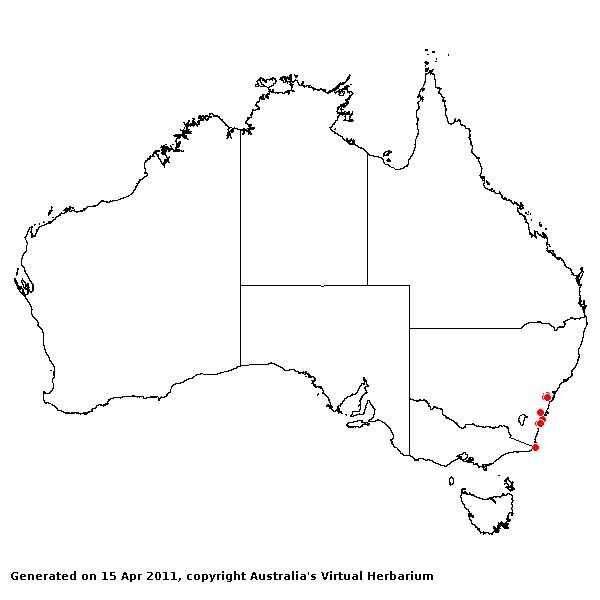Deyeuxia angustifolia Vickery. Contr. New South Wales Natl. Herb. 1: 67 (1940).
Classification. (GPWG 2001) : Subfamily Pooideae. Tribe Poeae.
Type of Basionym or Protologue Information: Australia, Blue Mts., Wentworth Falls: Vickery K32 (K holo, CANB, NSW).
Key references (books and floras): [2002] D.Sharp & B.K.Simon, AusGrass, Grasses of Australia, [2008] S.W.L.Jacobs, R.D.B.Walley & D.J.B.Wheeler, Grasses of New South Wales (199), [2009] A.Wilson (ed.). Flora of Australia, Vol 44A. Poaceae 2 (207).
Illustrations: [2008] S.W.L.Jacobs, R.D.B.Whalley & D.J.B.Wheeler, Grasses of New South Wales, 4th edn (199).
Habit. Perennial. Culms erect, stature slender to delicate, 30–70 cm tall, 4 -noded. Mid-culm internodes glabrous. Mid-culm nodes glabrous. Lateral branches simple. Leaves mostly basal. Leaf-sheaths scaberulous. Ligule an eciliate membrane, 1–2 mm long, membranous, abaxially scaberulous, truncate. Leaf-blades involute or convolute, 15–30 cm long, 1–4 mm wide. Leaf-blade surface scabrous, indumented.
Inflorescence. Inflorescence compound, a panicle. Panicle linear or oblong, loose, 1–9 cm long, 0.4–0.7 cm wide.
Spikelets. Spikelets pedicelled. Fertile spikelets 1-flowered, comprising 1 fertile floret(s), with a barren rachilla extension, lanceolate, laterally compressed, 3–5 mm long.
Glumes. Glumes similar, similar to fertile lemma in texture. Lower glume lanceolate, chartaceous, keeled, 1-keeled, 1 -nerved. Upper glume lanceolate, 4–5 mm long, chartaceous, keeled, 1-keeled, 1 -nerved. Upper glume surface asperulous.
Florets. Fertile lemma 4–5 mm long, without keel, 5–7 -nerved. Lemma apex entire or dentate, awned, 1 -awned. Median (principal) awn subapical, 1 mm long overall. Lodicules present. Anthers 3.
Continental Distribution: Australasia.
Australian Distribution: New South Wales.
New South Wales: Central Tablelands, Southern Tablelands.
Notes. Endemic. N.S.W. and A.C.T. Usually in sclerophyll forest, in gullies and crevices, also in swamps. Flowers spring-summer.




